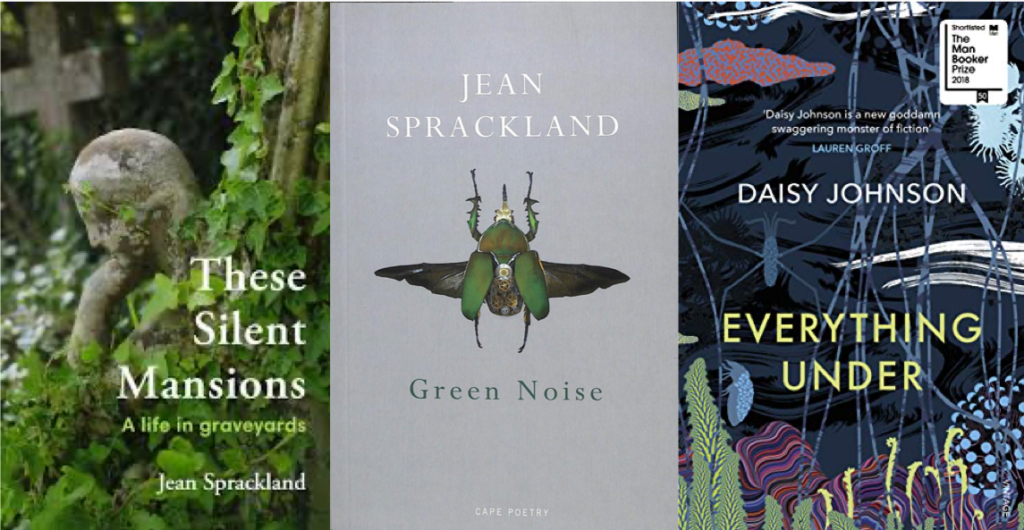I’ve never featured the same author twice in once month here before, although there are some who have popped up multiple times (looking at you particularly Diane Setterfield and Patrick Gale). But at the launch of her new memoir about graveyards (obviously a must-read here in tombtown), Jean Sprackland mentioned that she had been writing parts of Green Noise at around the same time, and I was curious to read them together and see where they overlapped. They were both wonderful, in their different ways, and so they’ve both ended up here.

Best Non-fiction: These Silent Mansions, by Jean Sprackland. A memoir is often a zeroing-in on a certain time period in someone’s life, and, less frequently, it can be a tugging-out of a thread of a single colour winding through the author’s whole history. These Silent Mansions is the latter. It is an exploration of the graveyards that Sprackland has known throughout her lifetime, the stories from her own past and, in a further branching, stories of death and burial from before her time. She ponders our changing relationship with death and burial over the centuries and how we might look to the future. At the launch Sprackland described herself as a ‘professional noticer’, but it’s not a passive observation – she scrapes away brambles, climbs fences, and squeezes under low bridges to dig out these histories. Her prose is beautiful and I felt as if I was kneeling right beside her as she traced carved letters on a stone and spoke to me about buried treasures.
Best Poetry: Green Noise, by Jean Sprackland. Green Noise is poetry for springtime. Not all of it is set in spring, but there is such a fervour of life in it that you could easily forget about a dull winter or a scorching summer. Sprackland reminds me of Elizabeth Bishop in her ability to take something mundane and prove that it is beautiful and interesting. In ‘Coal and Coke’: ‘One I loved for its deep, reflective gravity, / the other for its airy, roughcast charm.’ This is the kind of nature poetry I love best; it doesn’t create an idealised but false environment where humanity and its impact is erased, and it doesn’t require grandiose meadows or mountain ranges to make its point.
Dear street, you’re all mixed up –
paved with crushed rowanberries
and shadows, though even
midwinter sun climbs high enough
to sit on the roofs, spilling its sherbet
into the road below,
These are poems of close observation and surprising imagery. In ‘Alms’, Sprackland writes: ‘No one stops to kneel at the wellstones now. / No one swerves off onto the verge, / jumps out and scrambles down the bank’. But of course it’s abundantly clear that someone does stop – the poet does.
Best Novel: Everything Under, by Daisy Johnson. It’s taken me a long time to get to Daisy Johnson, in a way that reminds me how late to the party I was with Ali Smith. If only Johnson also had a lengthy backlist for me to devour, because I’ve fallen for her hard. I deliberately knew nothing about this book before I started it, I just had a feeling that it was one I wanted to meet unprepared, and I’m glad I did – it was like dropping into a river and coming up gasping and heart-broken. Johnson writes prose like a poet, or like a poet might dream of writing. I could have read the whole thing in one day, but it might have destroyed me, so I did it in chunks, and it still destroyed me a little. I won’t say anything about the plot except that I think the explorations around gender were beautifully done, and I urge you to go in cold as I did and let it swamp you. Also, there may not be a long backlist, but there is her short story collection Fen, and then Sisters coming soon. I wouldn’t be surprised if you see those here later in the year.
That’s it for February, let me know if you’ve read any of these, or if you have any more death books to recommend – there’s always space for them on my reading list!